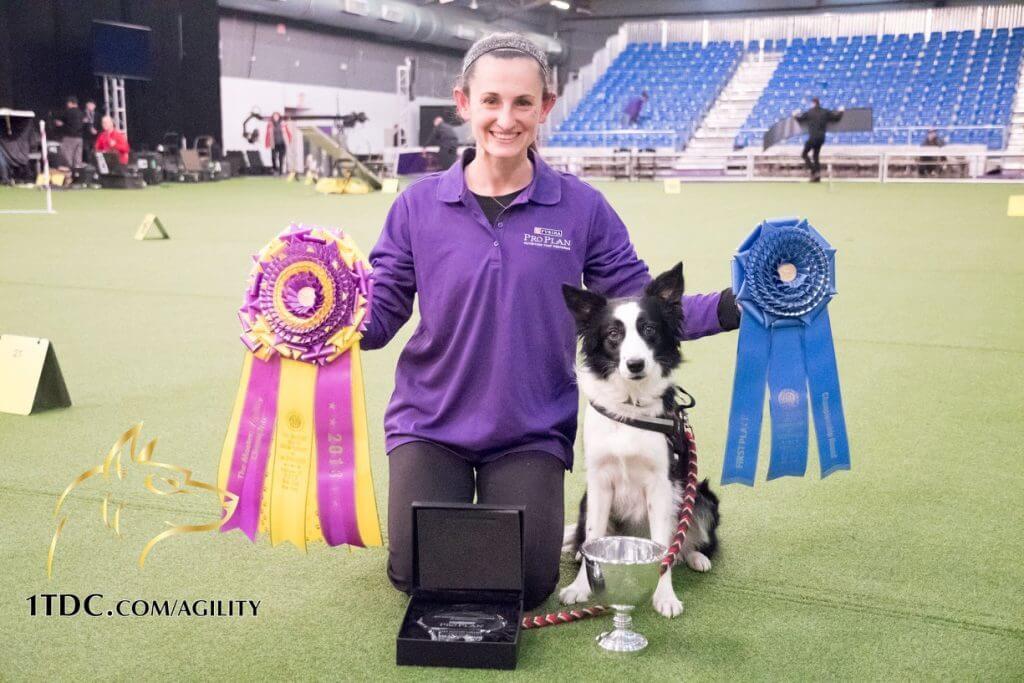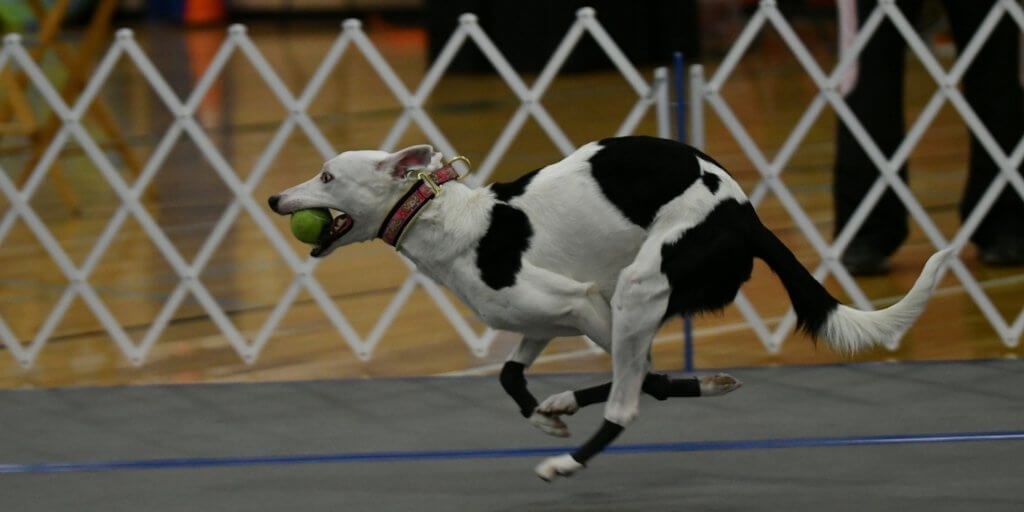Playing tug with your dog is a simple activity—one that both of you can enjoy, and one that is very common as a reward in flyball, agility, and other dog sports. However, there are ways to play tug with your dog that are safer than others, and they’re not always as obvious as you may think!
Here are a few tips for playing tug with your dog that will minimize the chances of injury and maximize the chances for fun!

- Keep your dog’s head and neck in line with their spine. The most common error made when playing tug is to hold the tug up high, so that the dog is leaning their head backward while pulling on the tug. This puts their head and neck out of alignment with their spine, as seen in the photo of Martok, which can cause damage to their body, especially if they shake the tug a lot. To solve this, try using a longer tug or getting down on the ground so you can tug on the same level as the dog’s head, as seen in the photo of Ezri.
- Don’t shake the dog! If you shake the tug yourself, you can twist the dog’s neck and head in ways they’re not expecting, and that can cause injury. Instead, hang on and give the dog enough slack so they can twist and pull as much as they want to, and keep your arm loose so that their shaking doesn’t twist your arm too much.
- When catching your dog on a tug for a recall, keep them on the ground or as close to it as possible. This can be difficult, especially with high-speed flyball dogs, but it’s important to stop them from twisting in midair, or worse, missing or losing grip on the tug and going flying against the hard floor or even the wall.
- If you have a large, fast flyball dog, consider changing how you catch or play tug with them in the runback. A 40-pound dog running a 4.0-second time on the flyball course is running at around 17 mph, so when they hit a tug at full speed, it’s similar to doing a fast bench press of 125 lbs—enough to hurt you or your dog if something goes wrong!
- Teach your dog to grip and hold their tug. This will result in a safer game for you, as a dog that re-grips or bites their way up the tug is more likely to accidentally bite your hand or to lose grip of the tug and chase it wherever it goes (even against your leg—ouch!).
With a little care and training, you can play tug with your dog with a low risk of injury, even with fast flyball dogs. It’s worth it to take the time to adjust your form and that of your dog so you can play together happily for years to come! Photo Credit: Blue Shift Photography, LLC









